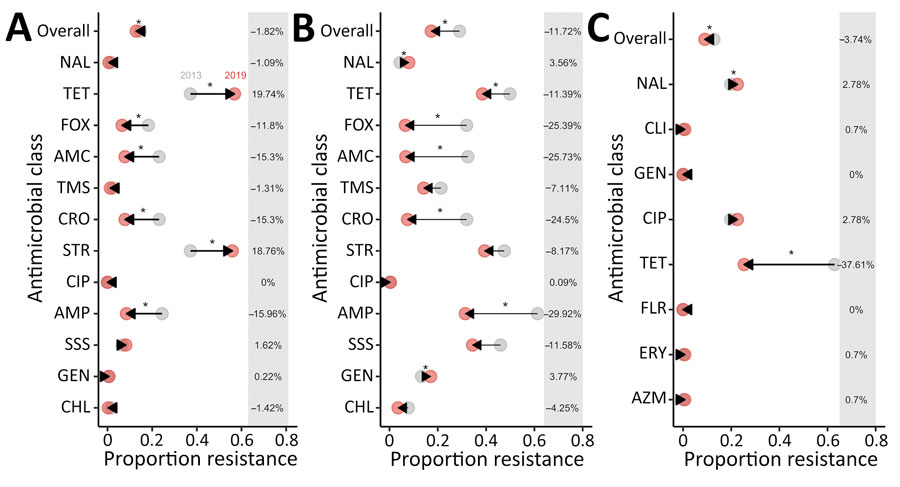Volume 27, Number 9—September 2021
Research
Reduction in Antimicrobial Use and Resistance to Salmonella, Campylobacter, and Escherichia coli in Broiler Chickens, Canada, 2013–2019
Figure 1

Figure 1. Change in mean proportion of antimicrobial resistance in Salmonella (A), Escherichia coli (B), and Campylobacter (C) in in broiler chickens, overall and by drug class, Canada, 2013–2019. Arrows represent directionality of proportion change in resistance from 2013 (gray) to 2019 (red) for each of the antimicrobial classes. Differences in proportion resistance from 2013 to 2019 are presented on the right side of each graph. Asterisks indicate p<0.05 as determined by mixed-effects logistic regression, including year and antimicrobial use (in ovo or through subcutaneous injection, water, and feed) as fixed effects and flock and veterinarian identification as random effects. AMC, amoxicillin/clavulanic acid; AMP, ampicillin; AZM, azithromycin; CHL, chloramphenicol; CIP, ciprofloxacin; CLI, clindamycin; CRO, ceftriaxone; ERY, erythromycin; FLR, florfenicol; FOX, cefoxitin; GEN, gentamycin; NAL, nalidixic acid; SSS, sulfisoxazole; STR, streptomycin; TET, tetracycline; TMS, trimethropim/sulfonamides.